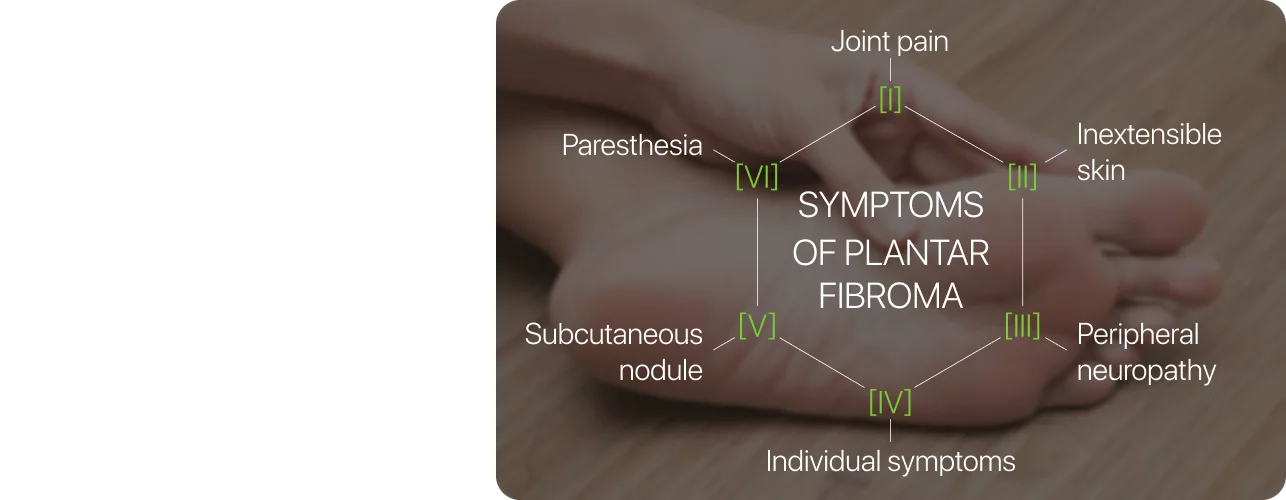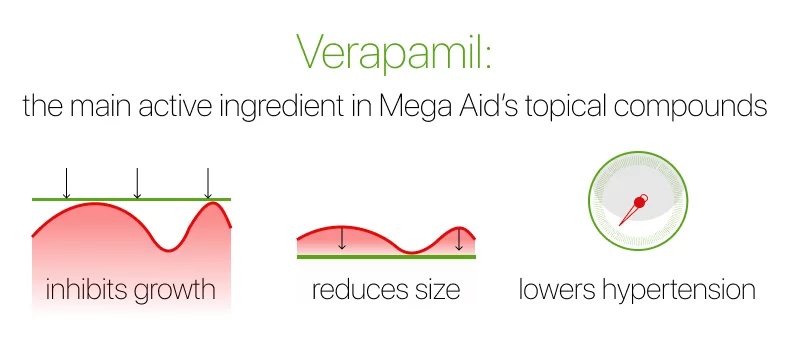Plantar Fibroma Treatment, Symptoms, and Causes

Plantar fibroma, also known as plantar fibromatosis or Ledderhose syndrome, is an uncommon benign tumor of fibrous tissue that primarily affects the plantar fascia in the foot. It is characterized by the formation of fibrous nodules, frequently occurring in the central medial areas of the non-weight-bearing regions of the plantar foot. While some plantar fibromas may be asymptomatic, common symptoms include the presence of a mass in the foot, difficulty in fitting shoes, and pain and tenderness while bearing weight.
What causes plantar fibroma?
The exact cause of plantar fibroma is not fully understood, but genetic factors, abnormal collagen production, and metabolism are believed to play a role. In addition to genetic predisposition, physical trauma to the foot has been suggested as a potential contributing factor. Repetitive foot injuries can lead to the tearing of the fascia in the arch, creating an environment that promotes the growth of fibromas. A plantar fibroma can occur concurrently with other related conditions, such as Dupuytren’s contracture or Morton’s toe. These associations suggest shared pathological processes in the body that contribute to the development of these conditions.
Symptoms of plantar fibroma
A plantar fibroma can manifest with various symptoms, although they may vary among individuals. While the following symptoms have been linked to this condition, it’s important to note that this list is not exhaustive: joint pain, lack of skin elasticity, paresthesia (abnormal sensations like tingling or numbness), the presence of a subcutaneous nodule (sometimes), and peripheral neuropathy (occasionally).


A plantar fibroma can have a significant impact on an individual’s quality of life and functional ability. Multiple studies have indicated that this condition can lead to a decrease in quality of life and cause substantial disability. It is important to consult with a healthcare professional for an accurate diagnosis and appropriate management to address any concerns or symptoms associated with plantar fibroma.
Therapeutic treatment options are often considered as a first-line approach for managing plantar fibroma before considering surgical intervention. This is because surgical removal of a plantar fibroma may carry potential risks such as a flattening of the foot’s arch or the development of hammertoes, which can further impact foot function and mobility. Therapeutic treatments, such as physical therapy, orthotics, non-surgical procedures like corticosteroid injections or the use of verapamil, aim to alleviate symptoms and promote functional improvement without the need for invasive procedures.
Plantar fibroma treatment using Mega Aid compounds
Mega aid uses a multimodal approach in creating topical formulations for plantar fibroma treatment.
In most cases we use Verapamil as a primary active ingredient. Verapamil is used in the treatment of plantar fibroma due to its potential to inhibit fibrous tissue growth and reduce the size of the fibroma. It’s also a calcium channel blocker used to lower blood pressure. Topical medicine with verapamil allows for minimal absorption into the blood, while maximizing the concentration of verapamil in the fibroma and the surrounding plantar fascia. In lab tests, the active ingredient has been shown to slow the growth of fibrous tissue.


To improve the treatment of plantar fibroma, we incorporate additional active ingredients in topical compounds such as
This approach enables us to enhance the effectiveness of the treatment and simplify the process for patients by combining different actives into a single treatment.


Patients with chronic conditions often struggle to find suitable formulations or dosage forms among traditional commercially-available drugs. This is because these drugs are formulated with standardized compositions that do not consider the individual health conditions of the patients. Factors such as known drug tolerances, allergies, sensitivities, and other health considerations can significantly impact the effectiveness and safety of the medication.
However, the use of Mega Aid compound treatment offers several advantages in addressing these challenges:
Mega Aid compound treatment offers a patient-centered approach that considers individual needs and maximizes treatment outcomes while minimizing potential risks and side effects.




